This is the story of our garden as seen via microphotography. The world of insects, spiders and other small forms can be enjoyed on any beautiful day from early spring until late autumn. I can step out of my house on any sunny morning with a cup of coffee and leisurely browse the garden and see where the action is.
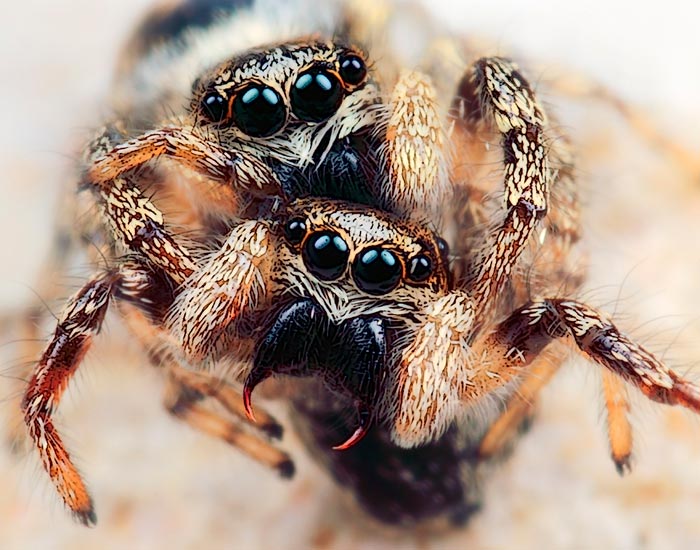
Or I can choose my spot and watch and wait. And with a little patience, insects and spiders will show themselves and sometimes seem to pose for the camera.
Watching the world of gardens in this way quickly reveals that it is truly “a jungle out there” – a jungle of small predators and preys striving for survival.
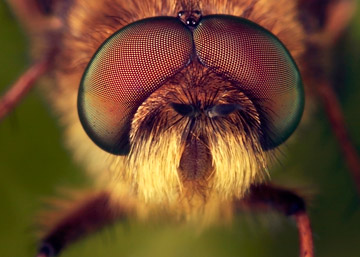
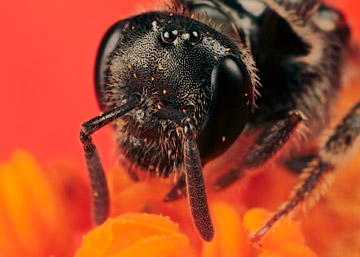
Walking through any flower garden, you’re likely to see bees, hoverflies, and any number of unrecognized insects flying around or walking upon the petals and blossoms of the beautiful flowers. Micro photography can uncover amazing details of the mysterious world of insects. And yet, this amazing world of insects is right outside the door of virtually every home.
Extremely Skittish
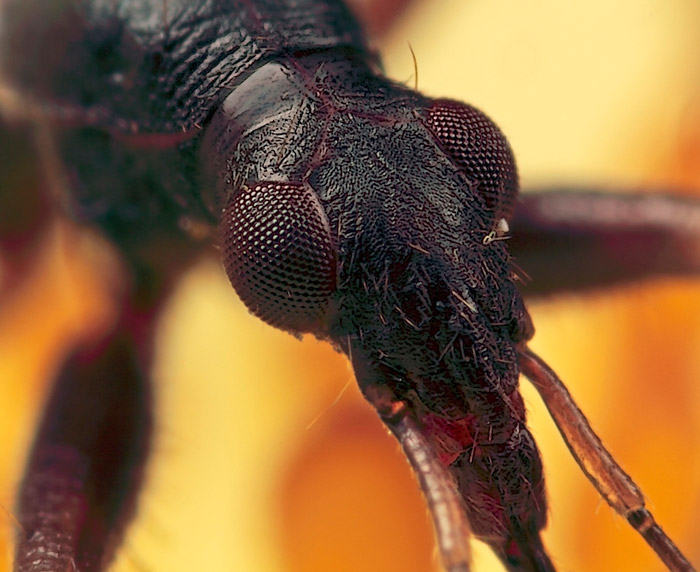
One of the first things you’ll notice is that some insects are extremely skittish, like butterflies, damselflies, and dragonflies, while others aren’t bothered by your presence at all. You’ll see that some insects are constantly moving about, such as ants and bees, where others prefer to sit still for extended periods – many spiders and assassin bugs.
And others still, like leafhoppers and plant hoppers, don’t seem to mind being photographed, but will shyly turn their back on you, forcing you to change position constantly. The point is that you should invest some time getting to know the common behavior of your tiny subjects and how they sense their environment before firing the first frame.
Spiders
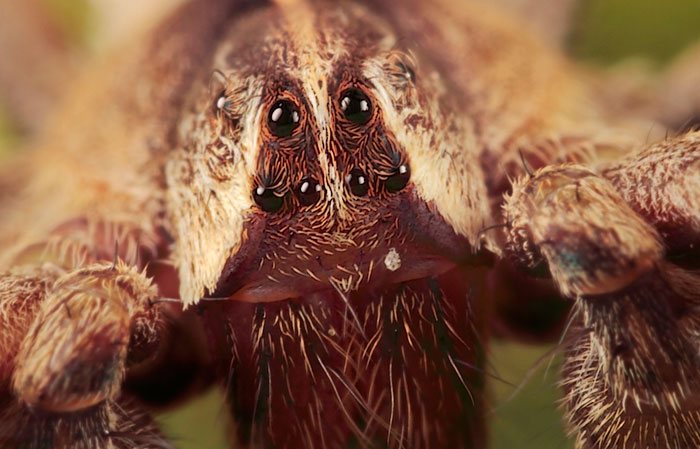
Spiders usually have eight eyes (some have six or less), but few have good eyesight. They rely instead on touch, vibration and taste stimuli to navigate and find their prey. They don’t have ears; they feel the sound vibrations with tiny hairs on their legs.
Most are able to detect little more than light-dark intensity changes which stimulate nocturnal web building, hunting or wandering activities, and rapid movement to allow quick reactions against daytime predators (e.g. by dropping from their web).
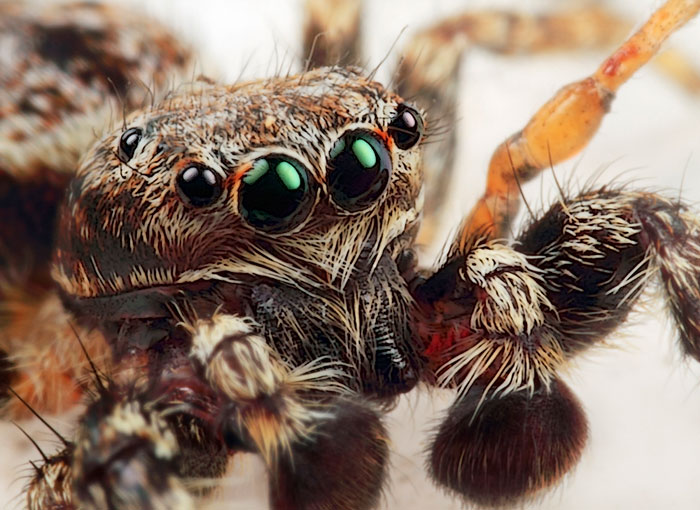
The jumping spiders, on the other hand, are well known for their excellent eyesight. The primary eyes are the larger ones looking straight forward. These eyes provide a clear, focused telephoto image, probably in color.
They have a movable retina to increase the visual field. A jumping spider can distinguish objects at thirty to forty centimeters (approximately 12-16 inches) distance with its secondary eyes, and once it is within about twenty centimeters (approximately 8 inches) of its prey, it can see it with its main eyes.
Jumping spiders can leap more than 20 times their own body length, propelled by their back legs. They are the only spiders known to respond to their own image in a mirror, taking up a threat posture as they would on encountering another member of their own species.
One of the fun things about these spiders is that they consistently investigate moving things, looking for food. That has often helped me with my spider photos because, instead of me searching for them, they will often come out of their hiding space to investigate me. And to make things even better, they will usually also turn to face me in a way that helps me get a better shot.
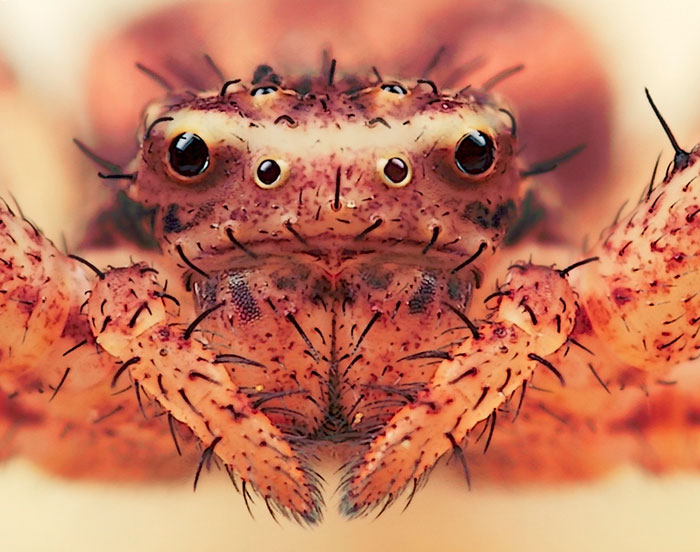
Crab spiders have short, wide, flattened bodies. The first two or three pairs of legs are longer than the rest and are normally held out from the sides of the body as a crab would hold its claws. Some crab spiders can walk forward, backward, or sideways like fiddler crabs.
Unlike other free-living spiders however, all of a crab spider’s eyes are small and serve primarily as motion detectors. Typical crab spiders are predators that lie in wait to ambush their prey.
Some of the flower spiders are able to change their color over several days, typically between white and yellow, depending on the color of the flower on which they are resting. Normally they will sit in plain sight. When the camera’s lens approaches they tend to move out a bit and assume a more threatening posture, although I have never seen one actually move towards the lens.
Flies
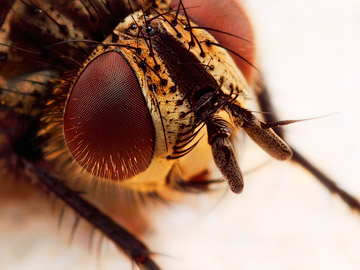
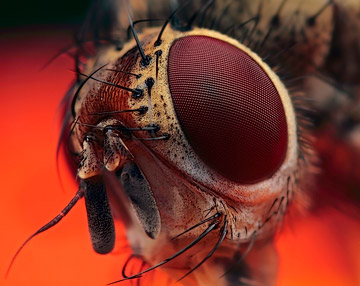
Flies are adapted for aerial movement, and typically have short and streamlined bodies. The head consists of simple eyes (ocelli), antennae, compound eyes, and the mouthparts. The antennae take a variety of forms, but are often short, which reduces drag while flying.
The antennae are important sensory structures used to detect air movement and odors. Because no species of fly has teeth or any other organ or limb that allows them to eat solid foods, flies consume only liquid food or finely granular foods, such as pollen, and their mouthparts and digestive tracts show various modifications for such diets.
Flies are very skittish and will take off at a moment’s notice. Working with large magnifications means that the fly is only a few centimeters in front of the lens. Even today the majority of flies take off before I can get a shot off, but with patience I get the shots I want.
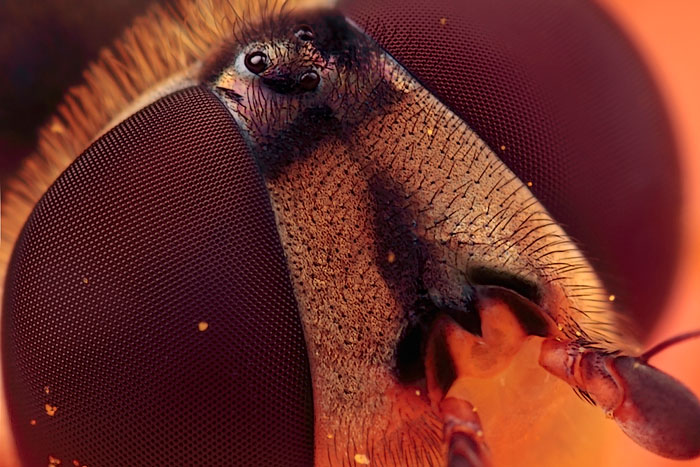
Hover flies are small to medium sized flies with large heads, large eyes, and small or inconspicuous antennae. Their bodies are medium to slender, with a waist that is not significantly narrow, unless it is a wasp mimicking species.
They have one pair of clear wings, and the banded forms have yellow and black bands of equal width. Hover flies are also called flower flies because they are commonly seen during warmer months hovering among flowers, feeding and mating.
Hover fly mimicry of wasps can include having a warning coloration of yellow and black, a narrow waist like a wasp and even the ability to mimic the stinging action of a wasp, by pushing the tip of the abdomen into your fingers if they are caught and held. However, they do not sting and are quite harmless.
The adults of many species feed mainly on nectar and pollen, while the larvae eat a wide range of foods. Hover flies are able to hover in place, but they are also fast and very maneuverable. They will often remain still on a flower for a few moments though, creating a good opportunity for a photograph.
Beetles

Ladybugs, often called ladybirds, are small beetles, ranging from 1 mm to 10 mm (0.04 to 0.4 inches), and are commonly yellow, orange, or scarlet with small black spots on their wing covers, with black legs, head and antennae.
A ladybug has two compound eyes, but it doesn’t see very well. Ladybugs can only see the difference between dark and light. The antenna is what helps a ladybug smell, taste, and feel its way around. The pronotum is the part right behind the ladybug’s flat head that sort of makes the head look round.
It actually protects the ladybug’s head and helps to hide it. Ladybugs have a shell, or hard case, that protects their wings and also protects them from predators.
Ladybugs are generally considered useful insects, because many species feed on aphids or scale insects, though larvae and eggs of their own species can also be important resources when alternative prey are scarce. Ladybugs in temperate regions enter diapause during the winter, so they often are among the first insects to appear in the spring.
Ladybugs are more active at higher temperatures, running underneath flowers and behind stems, making it often very difficult to capture a nice clean image. Sometimes when my lens gets to close, they will fall further into the brush to hide or simply run away.
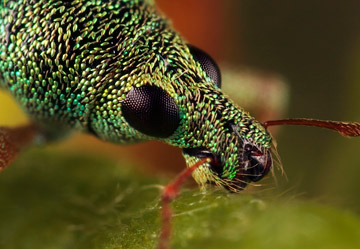
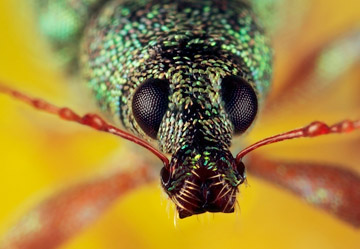
The weevils or snout beetles form the largest family in the animal kingdom, including about 48,000 species in total. Weevils are easily recognized, in most cases, by having the front of the head prolonged into a snout which may be long and slender, in some cases even longer than the body, or short and stout, being sometimes so short as to be hardly noticeable.
They are small to very large (1-60 mm, 0.04-2.36 inches) with diverse habits, shapes and colors. Their jaws are situated at the end of a snout that is adapted for chewing into seeds and stems. The antennae (feelers) are characteristically elbowed and clubbed and situated on the snout.
Both adults and larvae feed on plants, and most species are associated with a narrow range of hosts, in many cases only living on a single species. Females bore holes into seeds and stems where the eggs are laid.
CREATING YOUR IMAGES
Composition
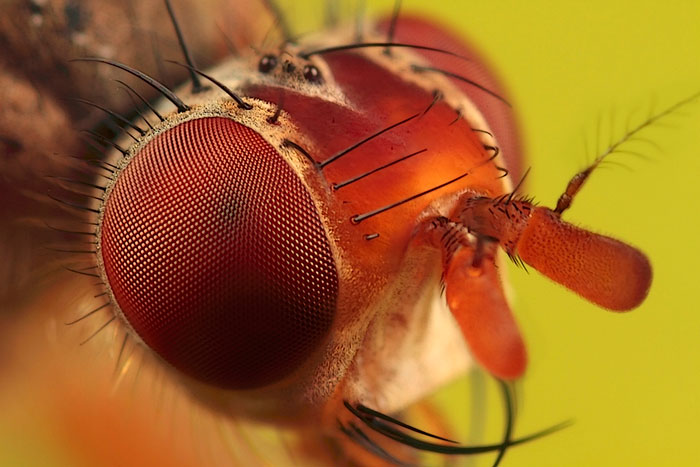
© 2010 Huub de Waard. All rights reserved.
Yellow Dung Fly: Magnification 9, f/6.4, ISO 100 and 1/250 sec.
Canon 7D, Canon macro lens MP-E 65mm/f2.8,
Canon 2x teleconverter and Canon macro Twin Lite Flash MT-E24EX
Composition is more difficult for microphotography than for other types of nature photography. Your subject might be a fly or a spider sitting on a difficult-to-reach place. Add the fact that you need to approach very carefully to not disturb your subject and you have a bit of a tricky situation.
There are no golden rules to help you solve this one. In microphotography, you want to simplify your image as much as you possibly can. Fill up as much of your frame as possible with the subject.
Have your focus as sharp as possible and don’t be afraid to experiment with different angles to find the one with the most aesthetic appeal. Remain aware of the background at all times. Because your background will be out of focus, you need to get rid of anything that will distract from the subject in the foreground.
Your final microphotography image should display fascinating details which are unfamiliar to us in our everyday lives.
Focusing
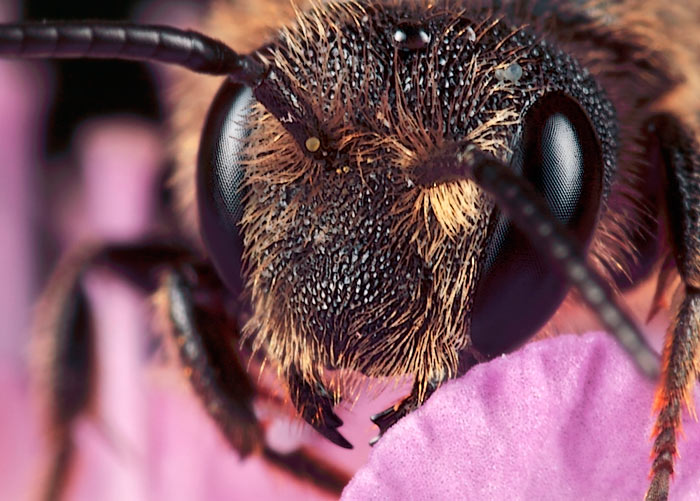
© 2011 Huub de Waard. All rights reserved.
Mason Bee: Magnification 5, f/14, ISO 100 and 1/250 sec.
Canon 7D, Canon macro lens MP-E 65mm/f2.8 and Canon macro Twin Lite Flash MT-E 24EX
Due to the small working distance (the distance between the lens and the subject) involved with large magnifications, it is not practical to use a tripod. It is advisable to use a ring flash or twin lite flash when shooting micros.
It will allow you to shoot at a reasonable speed, yet enable you to use a small aperture for sufficient depth of field and a fast shutter speed (e.g. 1/200 sec) to capture moving insects. Because I am hand-holding a relatively heavy and bulky setup, it is not possible to focus using the lens focusing ring, which also determines the magnification.
Rather, I pre-set the focusing ring based on how much magnification I want. Once the focus is set, I will physically move the lens, mounted on the camera body, back and forth until the facets in the compound eye(s) of my subject are in perfect focus in the viewfinder.
This is the tricky part, obviously, as a fraction of a millimeter can significantly affect the focus. For higher magnifications, the situation is even worse. In order to stabilize the whole setup, I’ll rest my elbow on my knee or both elbows on the ground. As soon as I see perfect focus being achieved, I’ll press the shutter button to take a photo.
More practical tips can be found in Practical Tips to Insect Microphotography.
With thanks to Jos Plas and Frans Mulder for their constructive comments and enthusiastic support.
by Huub de Waard
Article: © 2012 Huub de Waard. All right reserved.

Leave a Reply